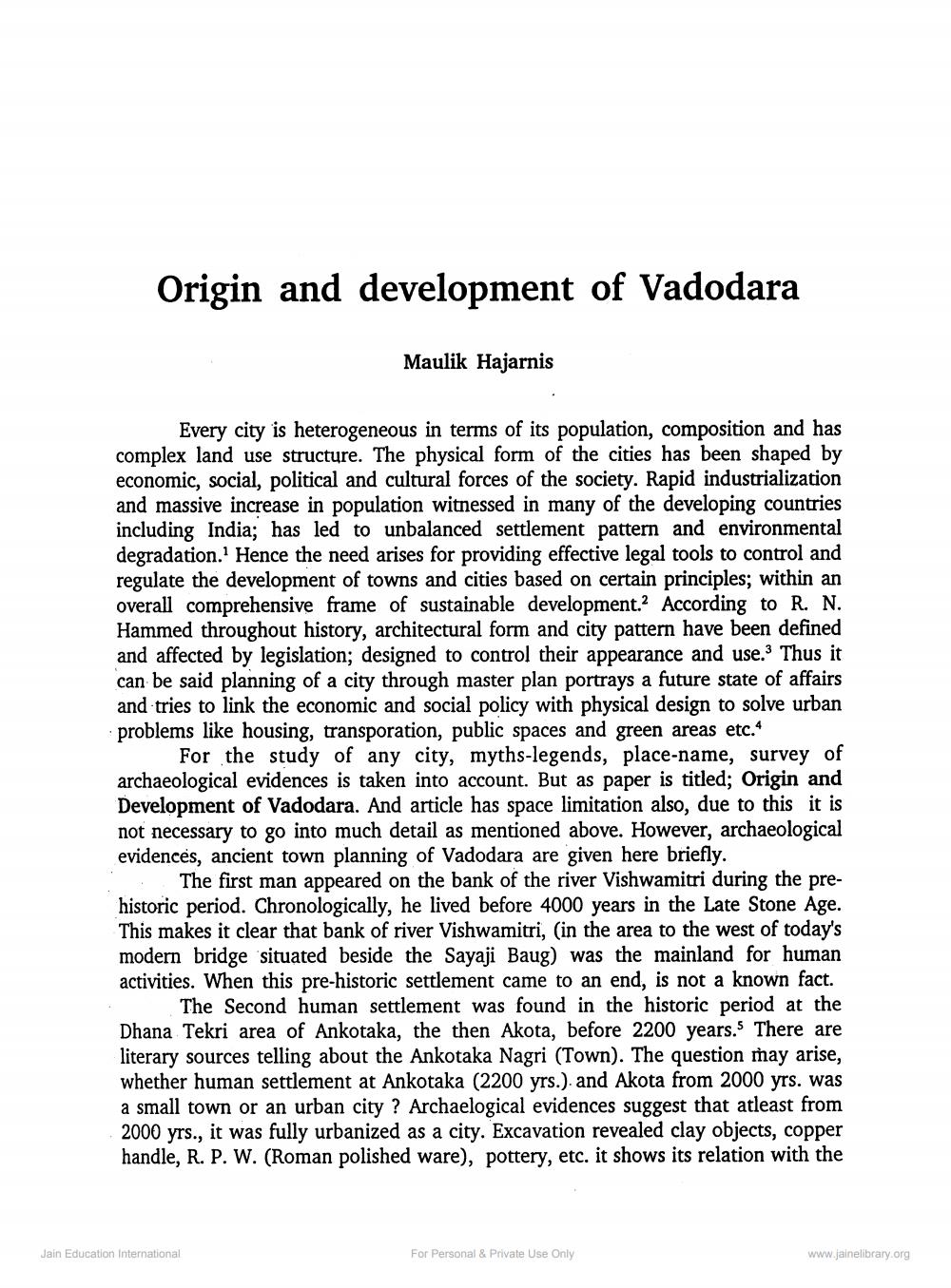________________
Origin and development of Vadodara
Maulik Hajarnis
Every city is heterogeneous in terms of its population, composition and has complex land use structure. The physical form of the cities has been shaped by economic, social, political and cultural forces of the society. Rapid industrialization and massive increase in population witnessed in many of the developing countries including India; has led to unbalanced settlement pattern and environmental degradation. Hence the need arises for providing effective legal tools to control and regulate the development of towns and cities based on certain principles; within an overall comprehensive frame of sustainable development. According to R. N. Hammed throughout history, architectural form and city pattern have been defined and affected by legislation; designed to control their appearance and use. Thus it can be said planning of a city through master plan portrays a future state of affairs and tries to link the economic and social policy with physical design to solve urban problems like housing, transporation, public spaces and green areas etc.
For the study of any city, myths-legends, place-name, survey of archaeological evidences is taken into account. But as paper is titled; Origin and Development of Vadodara. And article has space limitation also, due to this it is not necessary to go into much detail as mentioned above. However, archaeological evidences, ancient town planning of Vadodara are given here briefly.
The first man appeared on the bank of the river Vishwamitri during the prehistoric period. Chronologically, he lived before 4000 years in the Late Stone Age. This makes it clear that bank of river Vishwamitri, (in the area to the west of today's modern bridge situated beside the Sayaji Baug) was the mainland for human activities. When this pre-historic settlement came to an end, is not a known fact.
The Second human settlement was found in the historic period at the Dhana Tekri area of Ankotaka, the then Akota, before 2200 years. There are literary sources telling about the Ankotaka Nagri (Town). The question may arise, whether human settlement at Ankotaka (2200 yrs.). and Akota from 2000 yrs. was a small town or an urban city ? Archaelogical evidences suggest that atleast from 2000 yrs., it was fully urbanized as a city. Excavation revealed clay objects, copper handle, R. P. W. (Roman polished ware), pottery, etc. it shows its relation with the
Jain Education International
For Personal & Private Use Only
www.jainelibrary.org




